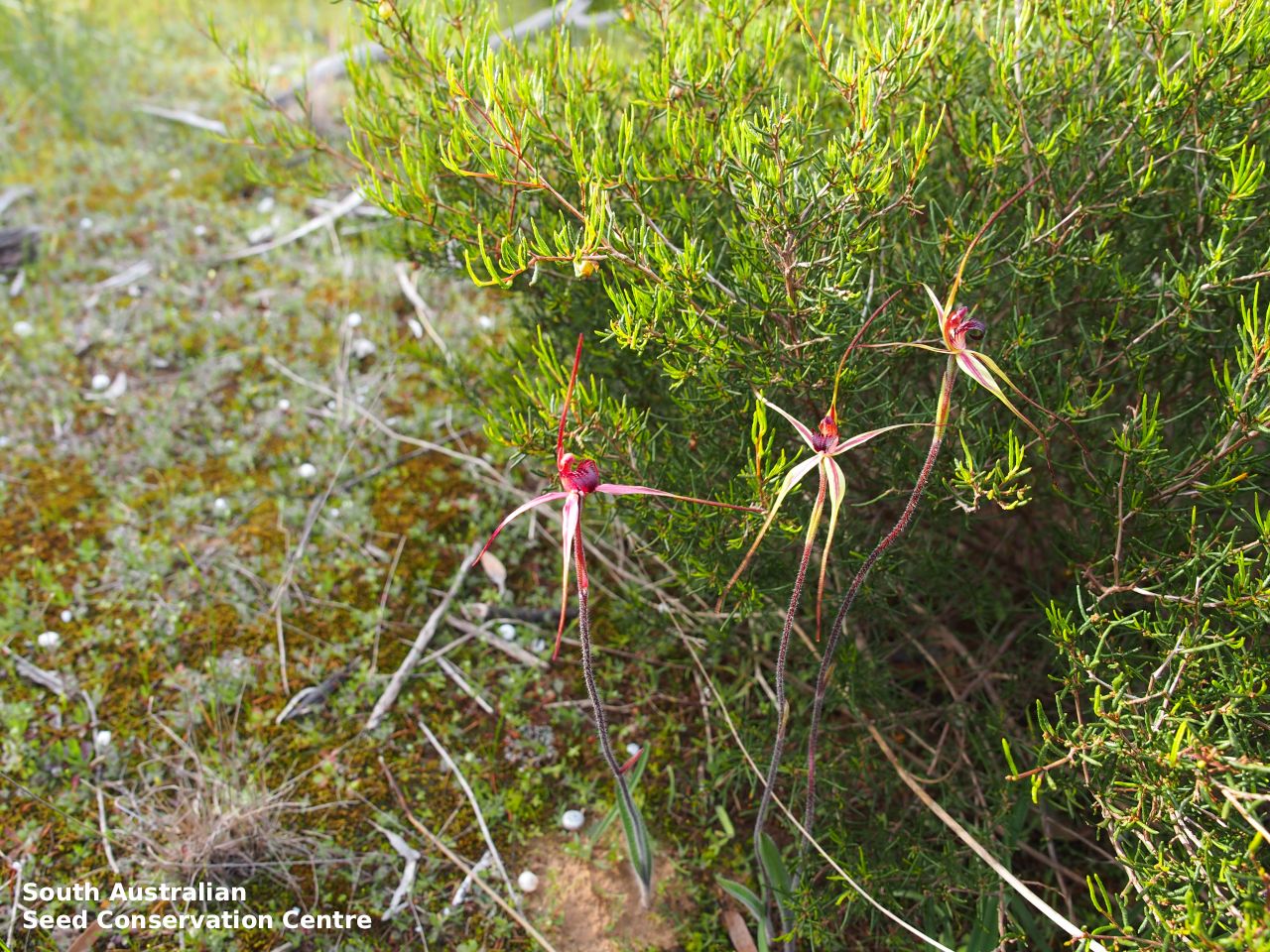




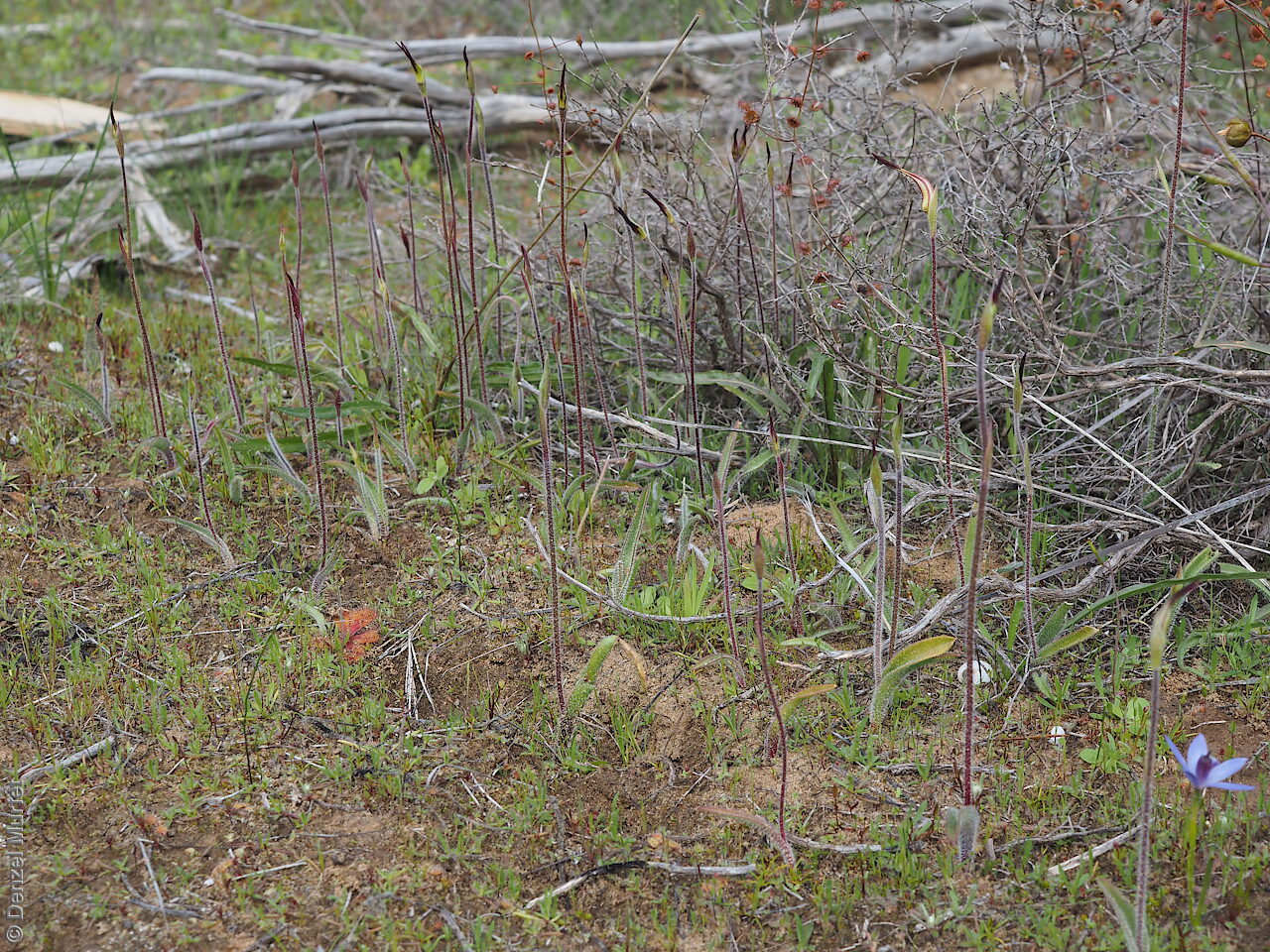

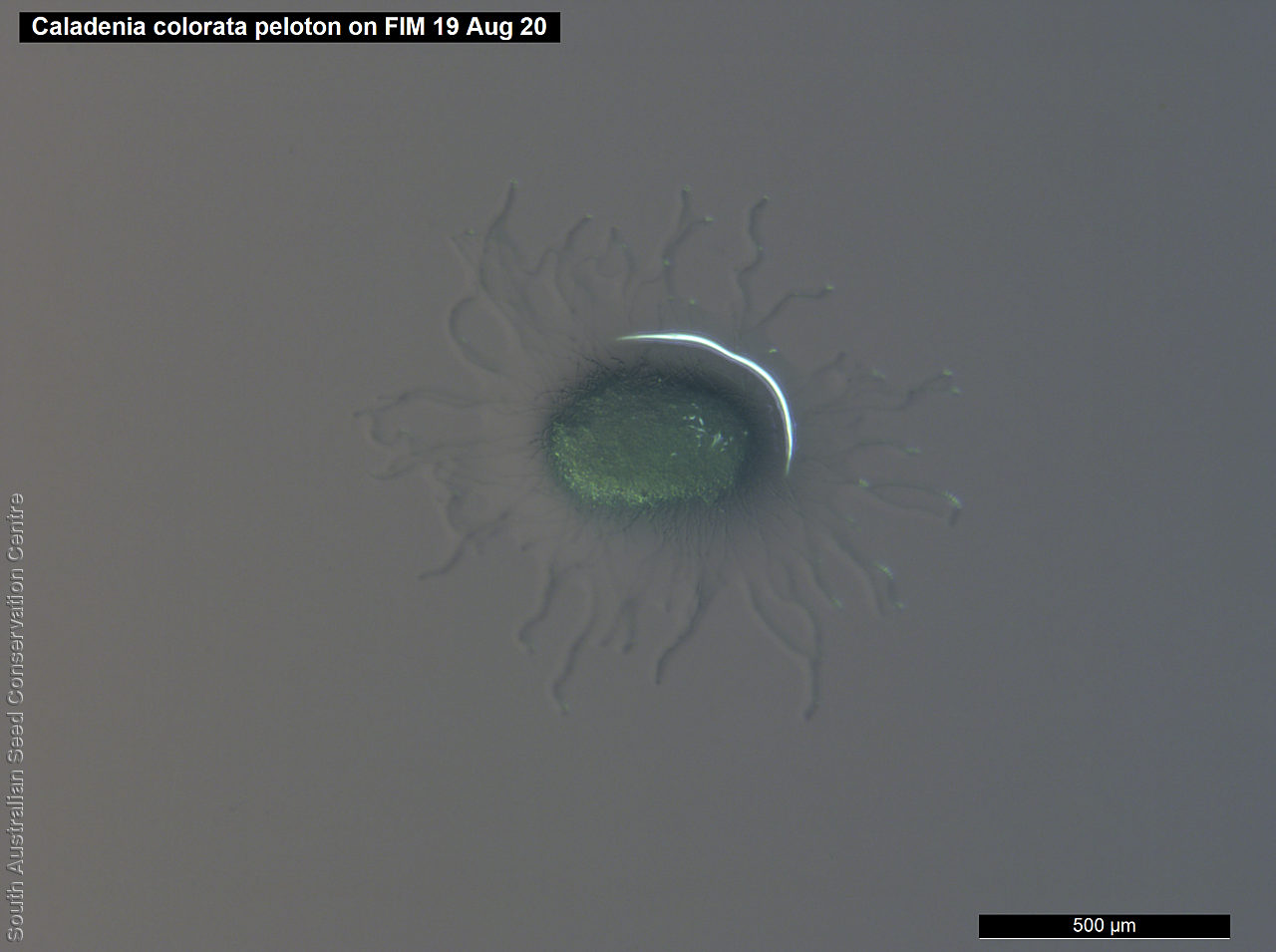





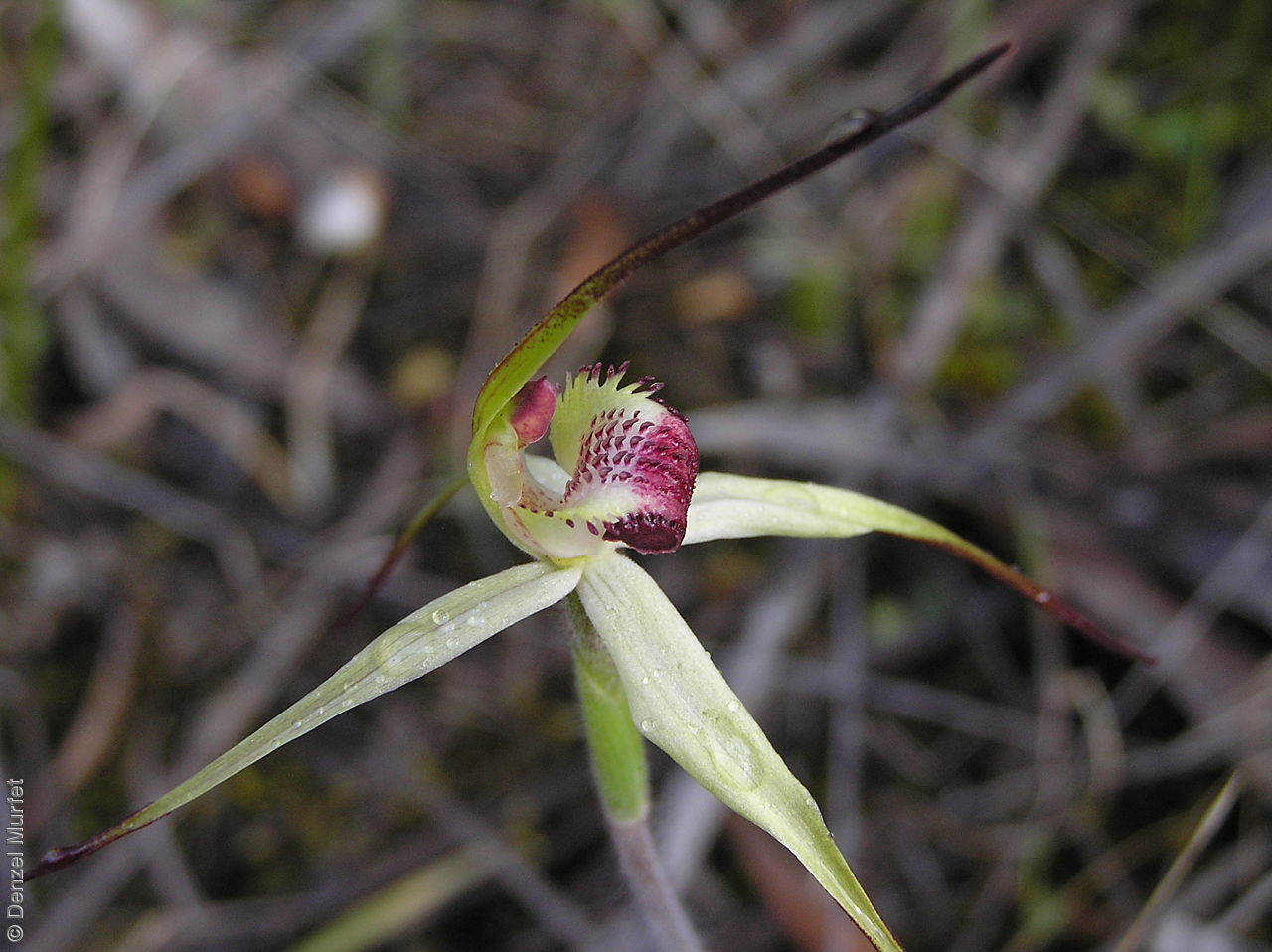
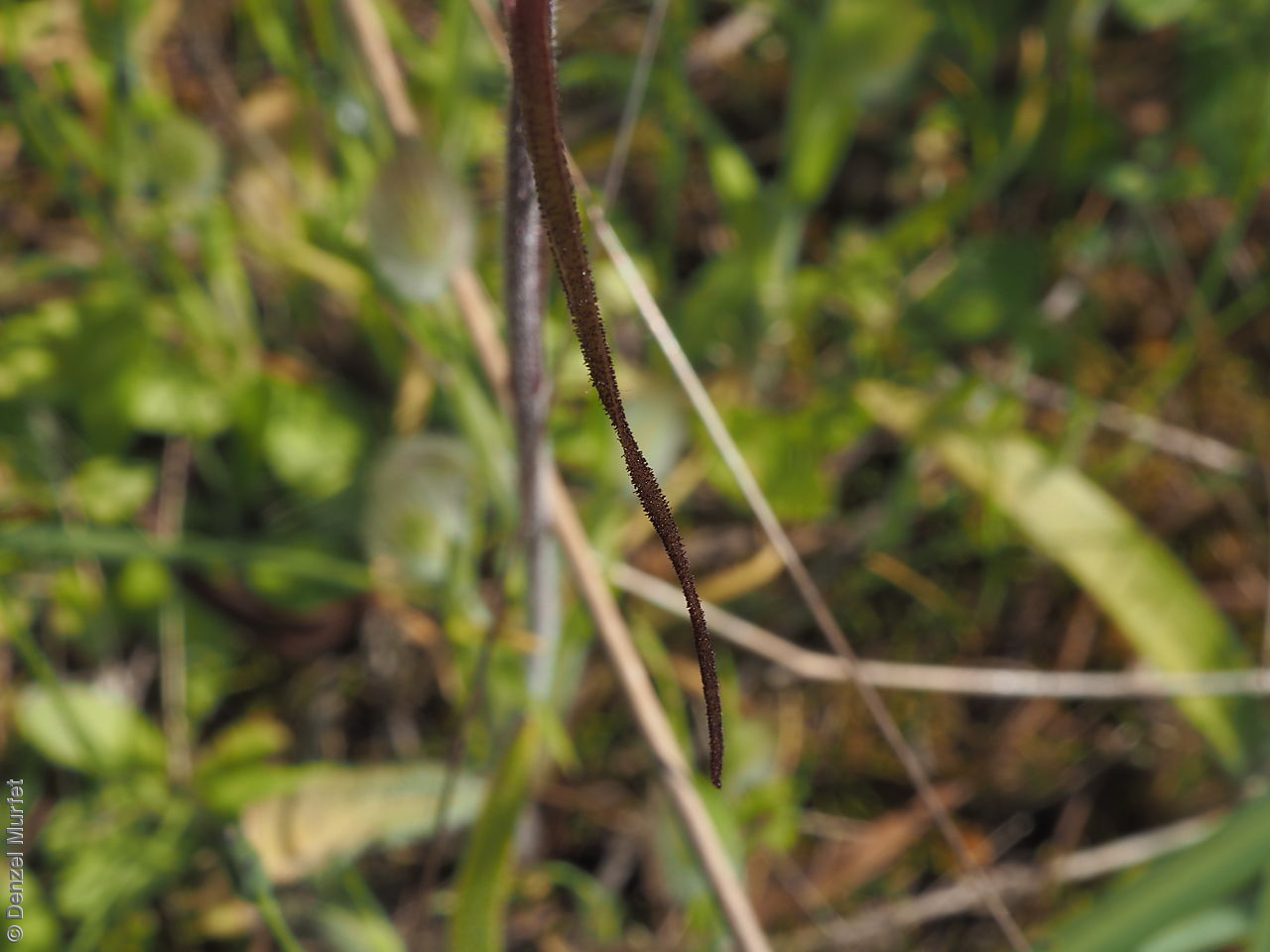

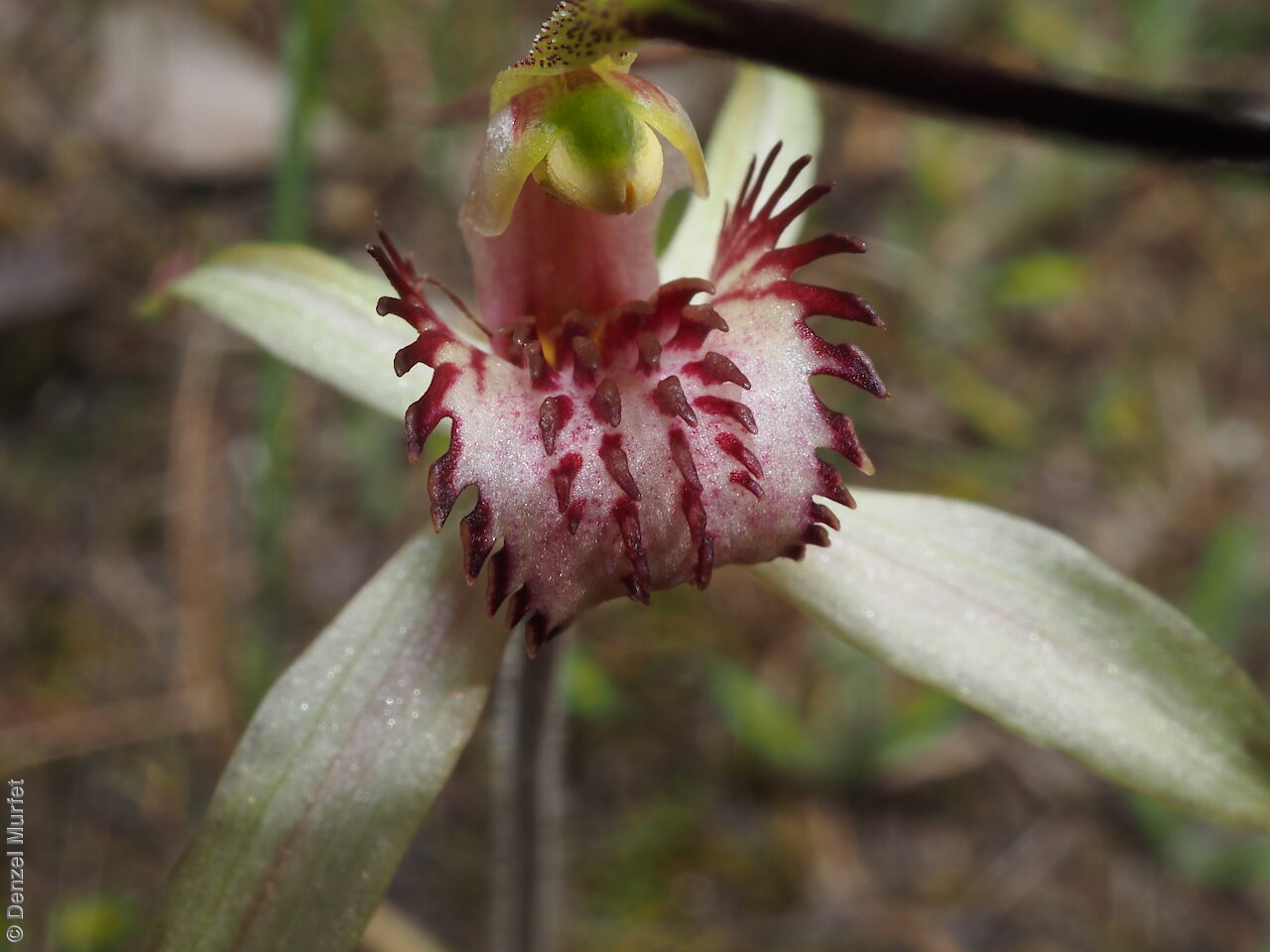

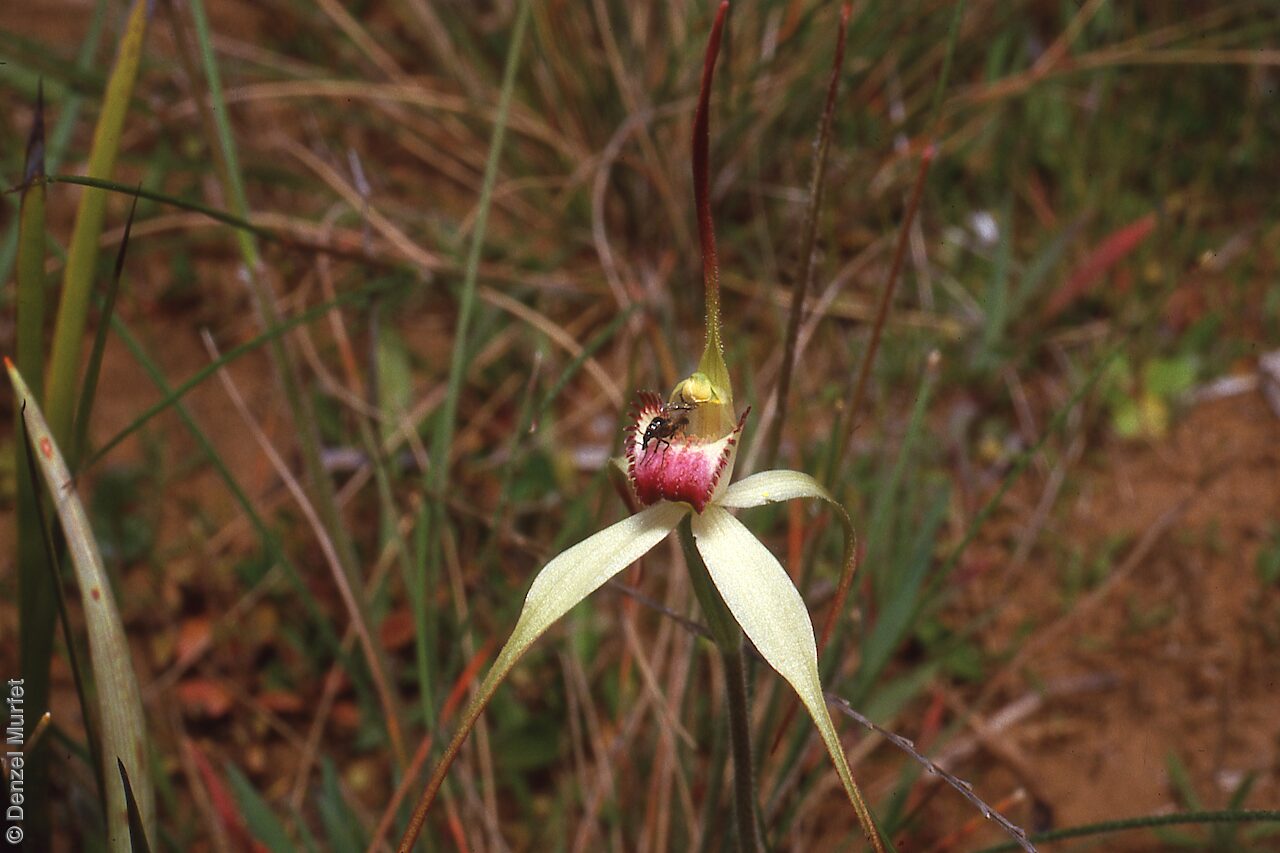
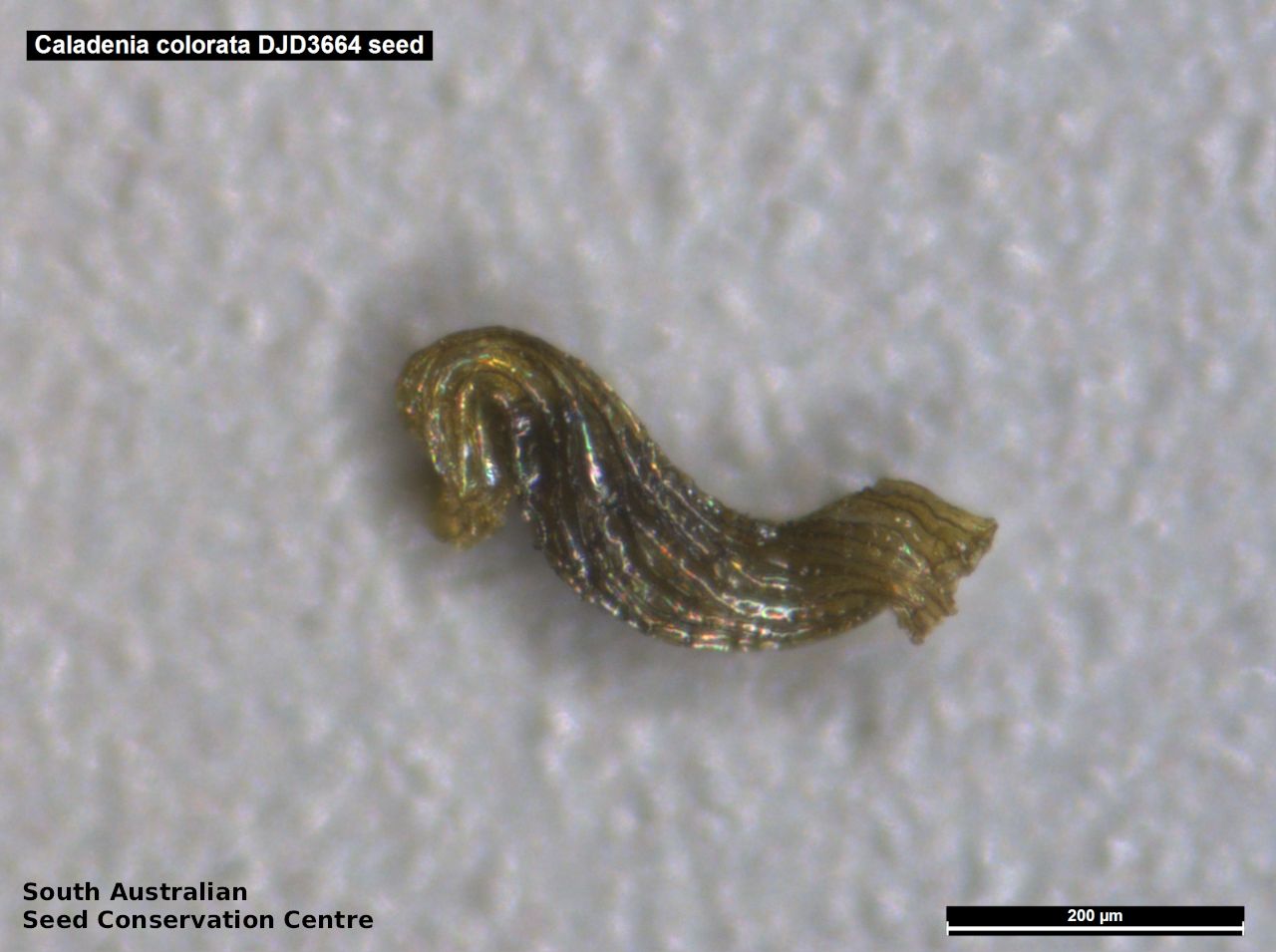



Botanical art
Prior names
Caladenia sp.
Calonemorchis colorata
Arachnorchis colorata
Calonema coloratum
Caladenia patersonii, partly
Common names
Painted Spider-orchid
Coloured Spider-orchid
Mallee White Spider-orchid
Etymology
Caladenia from the Greek 'kallos' meaning beauty and 'aden' meaning a gland, referring to the colourful labellum and the glistening glands at the base of the column that are present in many of the species. Colorata from the Latin 'coloratus' meaning coloured, alluding to the colourful flowers of this species.
Distribution and status
Found along the eastern margins of the southern Mt Lofty Ranges and in the South-east in South Australia, growing in sandy, fertile soils but also in rock outcrops and in mallee/broombush associations and woodland dominated by Eucalyptus leucoxylon, E. fasciculosa, Allocasuarina stricta and Callitris gracilis. Also found in Victoria. Native. Endangered in South Australia. Endangered in Victoria. Endangered in Australia (EPBC Act).
Herbarium regions: Northern Lofty, Murray, Southern Lofty, South Eastern
NRM regions: Adelaide and Mount Lofty Ranges, Northern and Yorke, South Australian Murray-Darling Basin, South East
AVH map: SA distribution map (external link)
Plant description
Hairy terrestrial herb to 25 cm high. Leaves ovate-lanceolate, to 10 cm long, densely felted with a red base. Flowers are about 5 cm across, generally cream-green with red or purple-brown markings, dark glandular tips to all segments. can be variable and can sometimes be wholly purple-brown. Labellum is flat, single lobe with an elongated tip that curls under, margins that are shortly fringed-dentate and a mid-lobe that is usually darker. The dorsal sepal is narrow throughout and erect, and the lateral sepals have a broad, flat, almost horizontal base and narrow pendulous tips. Petals are behind the flower and similar to dorsal and lateral sepals but shorter. Flowering between August and November. Fruits are pale-brown hairy, papery ellipsoid capsule containing numerous tiny seeds.
Seed collection and propagation
Collect seeds between October and December. Collect fat capsules as they start to dry and turn brown. Pods will split and release the seeds quickly and will require monitoring. To increase the chances of collecting mature pods, it is recommended that a small breathable bag (ie. Organza bags) be used to enclose the developing capsules. Place the capsules in a container that will hold fine seeds and leave to dry for a few weeks or until the capsule split. Then carefully hold the capsule and tap it gently to release the seeds. Store the seeds with a desiccant such as dried silica beads or dry rice, in an air tight container in a cool and dry place, refrigerator or in liquid nitrogen.
| Location | No. of seeds (weight grams) | Number of plants | Date collected | Collection number Collection location | Date stored | % Viability | Storage temperature |
|---|---|---|---|---|---|---|---|
| BGA | 232,000 (0.083 g) | 12 | 16-Oct-2017 | DJD3664 Murray | 30-Jun-2018 | N/C | -18°C |
| BGA | 38,300 (0.013 g) | 5 | 9-Oct-2018 | DJD3664 Murray | 24-Apr-2019 | N/C | -18°C |
| BGA | 868,500 (0.310 g) | 49 | 21-Oct-2020 | Ward property Murray | 28-Jun-2021 | N/C | -18°C, -80°C |
| BGA | 3,403,700 (1.210 g) | 113 | 14-Oct-2020 | Thomas property Murray | 28-Jun-2021 | N/C | -18°C, -80°C |
Number of plants: This is the number of plants from which the seeds were collected.
Collection location: The Herbarium of South Australia's region name.
% Viability: Percentage of filled healthy seeds determined by a cut test or x-ray.